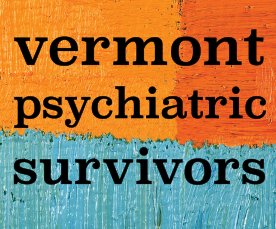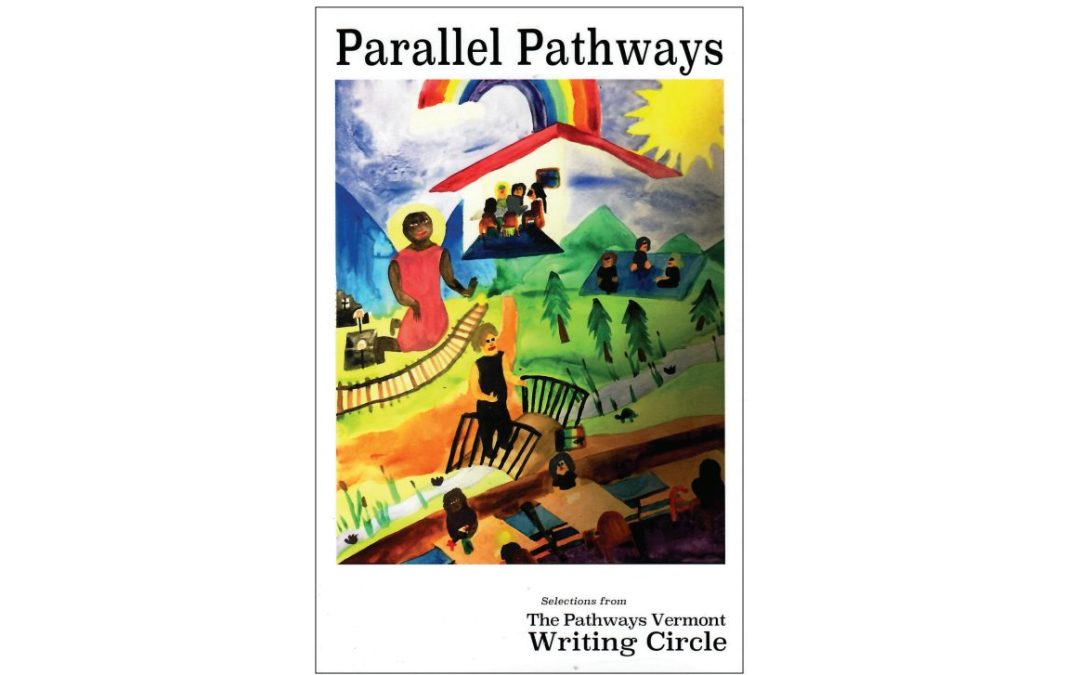Book review by Anne Donahue
If you begin reading Parallel Pathways by thumbing through, looking for a poem or story that looks appealing to read, you are likely to pause as some point and ask, “What is a ‘found poem’?”
Something written a long time ago, and recently rediscovered? Some unsigned piece of work discovered in the trash? Or maybe fluttering on a bus seat? What you will discover, once you turn back to the opening comments, is far more intriguing.
They are works that emerge from a creative weekly process at the Pathways Writing Circle group. Members of the group begin with free writing and then sharing. During the sharing, those listening jot down, verbatim, words or phrases that “jump out at or stick with us.”
For the following week, one group member creates a new poem that is a written collage that uses as many of the group’s shared words and phrases as possible. There may be modifications to tense or a few added words, but the point of the collage is to keep the content of the group process intact.
And that is a “found poem.”
The result is a collection of works by seven writers that includes 65 stories and poetry, the majority of them labeled as found poetry – pieces that flow from a common labor but without a skip in step.
Being is not enough.
Of that, I am bitterly aware.
Maybe I’m just bitter.
Maybe this choking, suffocating feeling
is from life’s half-hearted platitude;
My trivial place in this desolate world;
The fact that I am the person trapping me,
begins the found poem, “But, I Want To Feel Important,” by Abby Levinsohn.
It’s hard to imagine it was assembled using scattered phrases, and while it’s worth admiring the process, it probably just makes more sense to enjoy the products, no matter whether labeled as found or original. They are truly captivating.
I am shouting
With no sound
Screaming at the walls
My voice
Was locked away
A knot inside
Me
I was
Cramped in
My own body,
begins another piece, by Eryn Sheehan. The works are organized in intriguing categories such as “Periods of Soul Starvation” and “Bare Feet on Pavement.” Each one reverberates with the authenticity of lived experiences of pain, fear, solidarity and mindfulness.
The Pathways Writing Circle began in 2014, with themes that “vary from homelessness, isolation, addiction, abuse, nature, relationships, recollection of childhood and early youth, death,” and more.
“All of our poems are ‘parallel pathways’ – we are all travelers through the dark night of the soul changes, each arriving stronger and wiser at the beginning of a new dawn,” the book acknowledgment says.
At the end, the contributors share brief autobiographies. They include Levinsohn, who says the weekly group “forces me to get thoughts onto paper, even if the process feels jumbled and foggy;” Eryn Sheehan, who is Studio Manager at the Howard Center Arts Collective and describes herself as “a quiet and loud, outgoing soft-spoken person;” and Edward Burke, a peer support specialist who writes that, “I would rather be a little chilly than hot and sweaty, and prefer maple cream on my toast to avocado.”
Katharine O’Donnell writes that she contributed three found poems; Galen Knight shares that in his imaginative world, “I prefer to dwell in solitude in mythical caves, commune with monsters and robots or live in outer space” – but likes meaningful conversations on challenging topics in his real world.
Sarah Smith says that writing “has helped me express myself” and she’s found that it is important to share her feelings with other artists; Vesna Dye closes her comments by saying, “I will continue to write till the day I die.”
Anyone is welcome to join the group, which meets every Tuesday from 4 to 5:30 p.m. at the Pathways Community Center at 279 North Winooski Avenue, Burlington, and online on Zoom.
“Drop in sometime and experience this breeding ground for creative expression yourself,” the authors urge.
Of the book of collected works, they write in the introduction, “We are so excited to share a snapshot with you and hope you will find our eclectic offerings to be compelling and potentially inspiring.”
And they are, indeed.

